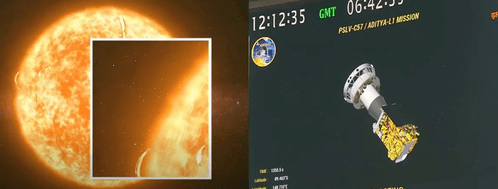
A special puja was conducted at the Suryanar/Sun temple in Suryanar Village near Kumbakonam in Tamil Nadu for the success of India’s Aditya-L1 space mission or Sun Mission on Saturday morning.
The Suryanar Temple is one of the Navagraha temples, all located near Kumbakonam, and devotees pray at these temples to get rid of negative planetary influence on them.
The presiding deity at the temple is Sun.
“A special puja and abhishekam with milk and honey was conducted on Saturday morning seeking the God’s blessings for the success of India’s space mission to the Sun,” D. Govindharaju, Deputy General Secretary, National Temples Federation told thebetterandhra.com.
An Indian rocket Polar Satellite Launch Vehicle-C57 (PSLV-C57) on Saturday morning blasted. Off from the second launch pad at Sriharikota rocket port carrying Aditya-L1 spacecraft to study the solar activities.
Govindharaju said there were about 500 devotees when the puja was held.
About 63 minutes after the lift off, the rocket will eject Aditya-L1 at low earth orbit. Then the orbit will be elliptical. As the spacecraft travels towards the Sun-Earth Lagrange Point (L1), it will exit the earth’s gravitational Sphere of Influence (SOI).
After exit from SOI, the cruise phase will start and subsequently the spacecraft will be injected into. A large halo orbit around the L1 — the point where the gravitational. Pull of two large bodies – Sun and Earth- will be equal. And hence the spacecraft will not gravitate towards any one of the planets.
The total travel time from launch to L1 would take about four months for Aditya-L1. And the distance will be about 1.5 million km from the Earth.
The nine Navagraha temples are: Suryanaar (Sun), Chandranaar (Moon), Angaragan (Mars), Budhan (Mercury), Guru (Jupiter), Sukran (Venus), Shani (Saturn), Rahu and Ketu.







